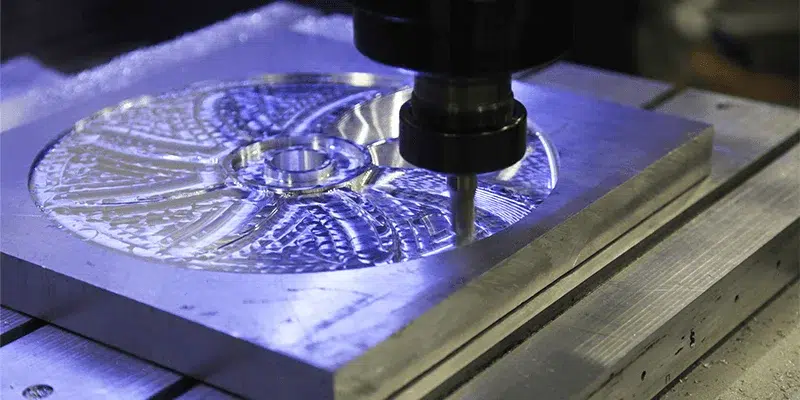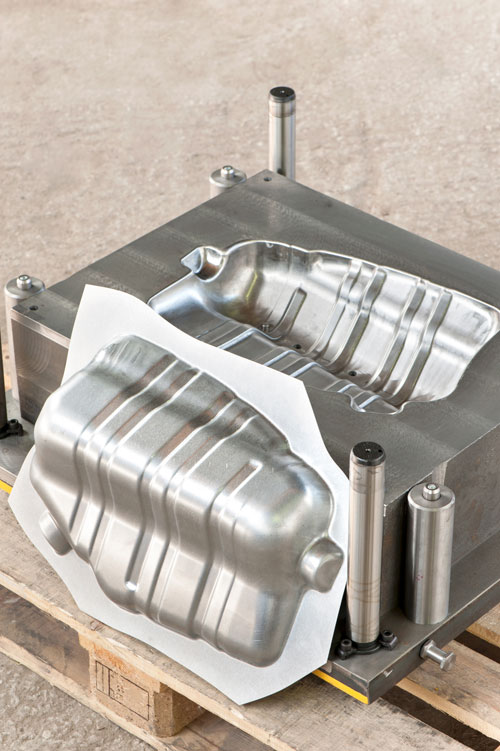Creative possibilities with Aluminum Casting for modern projects
Comprehending the Advantages and Varieties of Aluminum Castings in Industry
Aluminum castings have come to be progressively important throughout different industries because of their unique residential or commercial properties and producing versatility. Their light-weight and corrosion-resistant nature makes them suitable for requiring applications. Different casting approaches allow for exact and elaborate styles. As sectors evolve, recognizing the series of aluminum casting alternatives and their benefits is essential. This exploration questions concerning their future duty in manufacturing and sustainability. What exists ahead for aluminum in these markets?
The Essentials of Aluminum Casting Processes
Aluminum casting procedures vary in technique, they all share a common objective: to transform liquified aluminum into accurate shapes and parts. The key approaches of light weight aluminum spreading include sand spreading, die casting, and financial investment spreading. In sand casting, molds are created using sand, enabling elaborate styles but usually resulting in a harsh surface coating. Die casting employs high-pressure injection of liquified aluminum right into steel molds, generating high accuracy and smooth surface areas, suitable for mass production. Financial investment casting, or lost-wax spreading, entails creating a wax pattern coated with a ceramic covering, giving remarkable information and dimensional precision. Each technique has its particular applications and considerations, including expense, manufacturing volume, and intricacy of the shapes created. Comprehending these essential methods is important for markets that count on aluminum castings to satisfy their layout and practical needs.
Secret Advantages of Using Aluminum Castings
Aluminum castings supply countless advantages that make them a preferred option in numerous sectors. Among the vital benefits is their lightweight nature, which permits easier handling and lowered delivery expenses. This characteristic adds to improved energy efficiency, specifically in vehicle and aerospace applications. Additionally, light weight aluminum displays superb deterioration resistance, extending the life expectancy of elements and minimizing upkeep requirements.
An additional advantage is the adaptability of light weight aluminum castings, which can be built right into complex forms, enabling innovative layouts that traditional products may not suit. The thermal and electric conductivity of light weight aluminum likewise makes it excellent for applications requiring warm dissipation or effective electric connections. Aluminum castings are recyclable, lining up with sustainability goals and lowering environmental influence. On the whole, the mix of stamina, resilience, and versatility makes aluminum castings a vital component in contemporary manufacturing techniques across several industries.
Usual Kinds Of Aluminum Castings
Aluminum castings are generated with numerous approaches, each suited for various applications and requirements. Among the most usual methods are sand casting, which offers adaptability and cost-effectiveness, and pass away spreading, known for its accuracy and effectiveness. Comprehending these procedures is essential for picking the ideal casting method for certain commercial requirements.
Sand Casting Process
A significant section of aluminum castings in industry is created with the sand casting process, which is renowned for its adaptability and cost-effectiveness. This approach includes developing a mold and mildew from a sand mixture, allowing for the production of complex shapes and huge components. Sand spreading is especially beneficial for small to medium-sized production runs, as it needs minimal preliminary financial investment in tooling. The procedure begins with pattern production, followed by mold and mildew prep work, putting liquified light weight aluminum, and finally, cooling down and completing. The high thermal conductivity of aluminum assurances even cooling down, reducing the danger of flaws. Consequently, sand spreading stays a preferred selection for makers seeking effectiveness and adaptability in their light weight aluminum spreading applications.
Die Casting Techniques
Die casting methods stand for a very efficient method for creating light weight aluminum castings, particularly matched for high-volume manufacturing. These methods primarily consist of 2 common kinds: hot chamber and chilly chamber pass away casting. In hot chamber die spreading, the liquified light weight aluminum is injected right into the mold and mildew from a tank that is warmed, making it optimal for low-melting-point alloys. Conversely, chilly chamber pass away casting includes pouring the molten light weight aluminum into a different chamber before injection, which fits higher melting-point products. Both techniques use accuracy fit complex geometries and attaining superb surface coatings. In addition, pass away casting is known have a peek at this website for its rapid cycle times, reducing manufacturing prices while preserving consistency in top quality throughout large amounts of components.
Applications in the Automotive Industry
Changing lorry design and performance, light weight aluminum castings play a vital duty in the automobile market. These castings add considerably to weight reduction, boosting gas performance and total lorry characteristics. Secret applications include engine blocks, transmission real estates, and suspension parts, where their light-weight nature and strength are critical.
Aluminum castings likewise enable intricate geometries, allowing makers to create complex layouts that enhance air flow and minimize drag. This capability is specifically useful in electric and hybrid lorries, where performance and performance are extremely important.
Furthermore, the corrosion resistance of light weight aluminum expands the life expectancy of vehicle parts, reducing upkeep expenses and enhancing lorry integrity. The versatility of light weight aluminum castings supports both automation and custom applications, making them a preferred option among auto engineers and designers. Aluminum Casting. As the industry remains to innovate, aluminum castings will certainly stay a critical component in the quest of advanced vehicle modern technologies
Aerospace Market Usage
In the aerospace industry, light weight aluminum castings are indispensable to the design and performance of aircraft parts. These castings are made use of in different applications, including engine components, structural parts, and interior fittings. Their light-weight nature adds to boosted fuel efficiency and general performance, which is crucial in aerospace design.
Aluminum castings likewise provide outstanding strength-to-weight ratios, enabling producers to develop intricate layouts without endangering structural honesty. The capability to create complex geometries makes aluminum casting a preferred choice for parts that require precision and dependability.
Furthermore, light weight aluminum's resistance to corrosion improves the long life of aerospace components, lowering upkeep costs and boosting safety and security (Aluminum Casting). The spreading procedure enables for high-volume production, fulfilling the market's demands for performance. In general, aluminum castings play a critical duty in advancing aerospace technology and optimizing aircraft layout, contributing to the sector's ongoing developments

Advantages Over Various Other Products
Aluminum castings offer significant benefits over other materials, making them a recommended selection in various sectors. One of the primary advantages is their lightweight nature, which adds to decreased energy intake and enhanced performance in applications such as automotive and aerospace. Furthermore, light weight aluminum shows outstanding deterioration resistance, permitting prolonged toughness and minimized upkeep prices.
The material's superior thermal and electric conductivity even more boosts its allure, specifically in applications requiring warm dissipation or reliable energy transfer. Aluminum Casting. Aluminum castings additionally give outstanding dimensional security, guaranteeing precise tolerances and reducing the probability of problems throughout the manufacturing process
The versatility of light weight aluminum permits for intricate shapes and elaborate layouts, which can be attained with different casting techniques. This versatility makes aluminum an important choice for producers intending to introduce while maintaining cost-effectiveness and high quality. To wrap up, light weight aluminum castings attract attention as a result of their one-of-a-kind combination of properties that accommodate diverse commercial requirements.
Future Patterns in Aluminum Casting Innovation
Future trends in light weight aluminum spreading modern technology are significantly concentrated on automation and the advancement of sophisticated alloys. Automation stands to improve performance and accuracy in casting procedures, reducing labor expenses and improving product uniformity. Concurrently, browse this site improvements in alloy formulas promise to expand the series of applications for aluminum castings, dealing with particular performance requirements in different industries.
Automation in Casting Processes

Advanced Alloys Development
With the ongoing evolution of material science, the advancement of sophisticated alloys is set to transform aluminum spreading modern technology noticeably. These ingenious alloys are designed to boost mechanical properties, corrosion resistance, and thermal stability, accommodating diverse commercial applications. Scientists are concentrating on crossbreed alloys that integrate elements such as magnesium, silicon, and zinc to accomplish peak efficiency. Additionally, developments in computational modeling and simulation are enabling the forecast of alloy behavior under numerous problems, improving the layout process. The combination of reusing modern technologies is also ending up being crucial, enabling manufacturers to produce high-performance aluminum castings while decreasing ecological influence. As these patterns continue, the aluminum spreading market is most likely to witness considerable improvements in efficiency, sustainability, and item top quality.
Often Asked Concerns
How Is Aluminum Casting Ecologically Friendly?
The concern of light weight aluminum spreading's environmental friendliness develops from its recyclability and reduced power usage contrasted to other steels. Additionally, advancements in lasting techniques better enhance its environmentally friendly track record within producing processes.
What Is the Normal Lifespan of Aluminum Castings?
The common lifespan of aluminum castings varies based upon application and setting, generally ranging from several years to decades. Aspects such as exposure to harsh elements and mechanical tension can greatly affect their durability and durability.
Can Aluminum Castings Be Recycled?
Aluminum castings can certainly be reused. This process significantly lowers waste and saves sources, allowing suppliers to reuse products successfully. Recycling light weight aluminum castings adds to sustainability and minimizes the environmental effect connected with aluminum manufacturing.
What Are the Usual Flaws in Aluminum Castings?
Usual problems in aluminum castings consist of porosity, shrinkage, imbalance, and surface blemishes. These concerns can develop from insufficient pouring techniques, incorrect alloy make-up, or insufficient cooling, eventually impacting the top quality and efficiency of the end product.
How Do I Pick the Right Aluminum Casting Refine?
Picking the right light weight aluminum casting process calls for evaluating manufacturing quantity, part complexity, and wanted homes. Elements such as cost, lead time, and product attributes additionally influence the choice, guaranteeing ideal outcomes for specific applications.